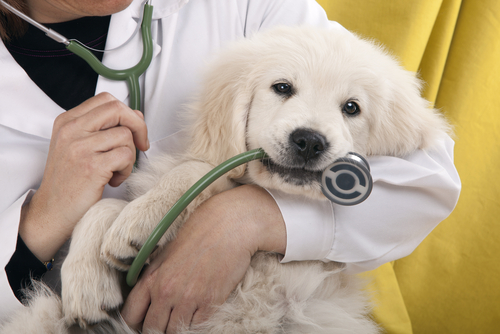Microdystrophin Gene Therapy Shows Promise in Dogs with Duchenne Muscular Dystrophy, Study Shows

Injecting a smaller but functional form of the dystrophin gene, called microdystrophin, into dogs naturally affected by Duchenne muscular dystrophy allowed them to recover muscle strength and stabilized their overall disease symptoms, a new study shows.
“This preclinical study demonstrates the safety and efficacy of microdystrophin, and makes it possible to consider developing a clinical trial in patients,” Caroline Le Guiner, first author of the study, said in a news release.
“Indeed, this is the first time that it has been possible to treat the whole body of a large-sized animal with this protein. Moreover, this innovative approach allows treatment of all patients with Duchenne muscular dystrophy, regardless of the genetic mutation responsible,” Le Guiner added.
The study, titled “Long-term microdystrophin gene therapy is effective in a canine model of Duchenne muscular dystrophy,” was featured in the journal Nature Communications. Researchers used a delivery system based on a viral vector, a strategy commonly used in gene therapy, to inject the engineered microdystrophin in 12 Golden Retrievers naturally affected by DMD.
DMD is a rare inherited disorder caused by mutations in the gene that encodes the protein dystrophin, which is essential for normal muscle function. It is one of the longest human genes, which makes therapeutic use in its natural form technically impossible. To overcome this limitation, researchers created the new variant called microdystrophin that is shorter, but retains the function of the protein.
The results demonstrated microdystrophin’s potential as a gene therapy for people with DMD. The treatment increased levels of dystrophin protein in the dogs and significantly restored muscle function. Clinical symptoms of DMD in the dogs were stabilized for more than two years following treatment. No significant adverse side effects associated with the treatment were observed, demonstrating that it can be a safe treatment strategy.
“This is tremendously exciting progress towards a gene therapy for DMD,” said George Dickson, senior author of the study and researcher at Royal Holloway, University of London. “The studies in [Golden Retrievers naturally affected by DMD) have been spectacular and exceeded our expectations.”
The study also provided important data to support the therapeutic potential of this new gene therapy for DMD in children.
“This new evidence of the efficacy of gene therapy in Duchenne muscular dystrophy strengthens the therapeutic arsenal developed (exon skipping, CRISPR Cas-9, pharmacogenetics, etc.), and the first results are there. We need to forge ahead to complete the final phase and transform these scientific advances into drugs for children,” said Serge Braun, scientific director of AFM-Telethon.
The study resulted from the collaborative work between researchers from Genethon, the AFM-Telethon laboratory, Inserm (Nantes), and the University of London (Royal Holloway), and was supported by donations from the French Telethon.
“My team has worked for many years to optimize a gene therapy medicine for DMD, and now the quite outstanding work of colleagues in France, in Genethon, in Nantes, and in Paris has taken us close to clinical trials in DMD patients,” Dickson said. “I pay thanks also to the amazing and steadfast support of this research by AFM-Telethon and MDUK (Muscular Dystrophy UK) which has been essential to this achievement.”






